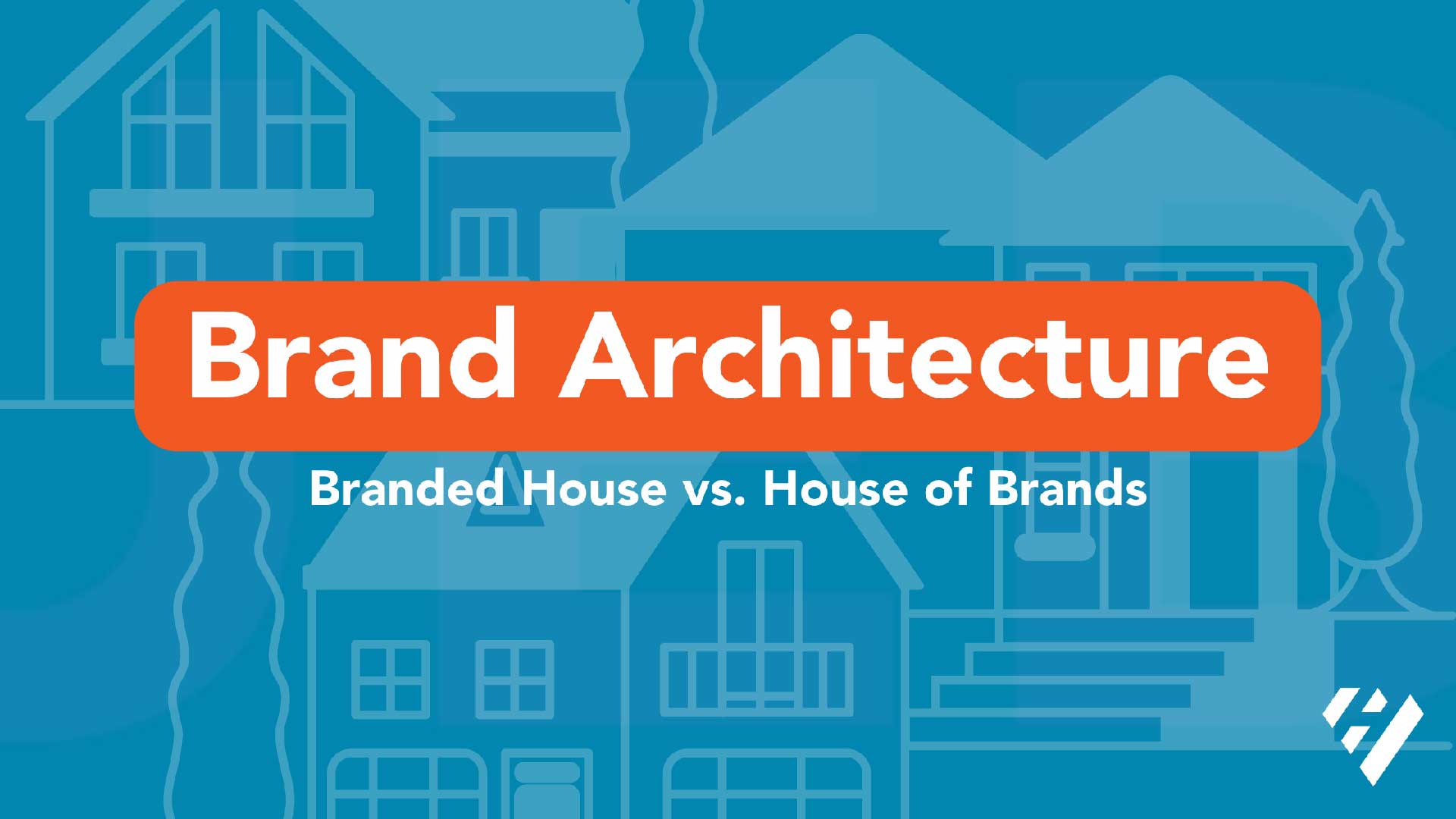
Brand Architecture Foundations: Branded House vs House of Brands
Lately, we’ve been digging deep with our clients (and here on our blog) into the basic tenets of brand building. We’ve talked about Brand Archetypes and unpacked 7 key questions to get to the bottom of what makes your brand most relevant to your customers.
For brands with plans for growth, especially through mergers and acquisitions, Brand Architecture is another key concept to consider. The choices you make in these crucial transitions will have a big impact on your brand positioning and relationship with your customer.
In this guide, we’ll explore the basics of Brand Architecture and the two most popular models for combining brands through mergers and acquisitions: Branded House and House of Brands.
What is Brand Architecture and Why Does it Matter?
Brand Architecture is a framework for organizing multiple brands, products, or services connected to one another, often by shared ownership. A strong Brand Architecture makes all the brands involved stronger by an appropriate relation to one another and clearly communicates each brand’s relevance to their respective customers.
We love the metaphor of architecture for this process because it truly is the foundation for building a strong brand, especially as you add additional wings or stories to your brand house through acquiring or merging with new companies.
Benefits of a Clear Brand Architecture
As your business expands, the right Brand Architecture can ensure each brand has the space to grow and evolve over time. If you have a diverse company with unique products or services, the right brand architecture can help you:
- Clarify Your Story: As your company expands, a brand architecture can help you clarify all that you offer to your customer and what makes each limb of the company most relevant to the end consumer. With consistent naming, positioning, and messaging strategy, you can understand how all the elements of your brand link together, and in turn, your customer can better understand you.
- Increase Flexibility: With the right architecture, you’re set up to expand and grow. As you add new services, products, or even other brands, your architecture enables you to seamlessly integrate these new divisions with a purpose.
- Improve Brand Equity: As your company grows, a strong brand architecture creates a network in which every service, product, and individual brand is properly organized. Every time your customer interacts with a piece of your company, they form a stronger bond with you as a result.
- Target More Customers: You may believe bigger is better. But you can’t get bigger without a plan. Your diverse brand can target more customers by refining the purpose of each limb of its business. The clearer your messaging, the stronger your customer connection.
- Integrate New Brands: An obvious benefit to a solid brand architecture is the consistency it offers brands that are acquired and added to the family. It is extremely important for the incoming employees to gain a quick and clear understanding of where they fit in the ecosystem and to feel valued for what their brand is bringing to the table. Clarity of brand architecture can help smooth the transition and more quickly reflect a consistent story both internally and externally.
Brand Architecture Models
Are you ready to get your house in order? There are two key models to consider: a Branded House and a House of Brands. While they may sound similar, each model offers distinct benefits to a growing company.
Branded House
In a Branded House model, the parent or holding company remains the parent brand and all of the smaller sub-brands operate under its umbrella. There may be individual brand activity for different products or services, but no brand stands completely on its own.
In a Branded House, all roads lead back to the parent brand and borrow from its brand positioning and value proposition.
Google is a strong example of a branded house. Known as friendly, accessible, ubiquitous, and interactive, Google has used this blueprint to inform all of its products.
Most people utilize Google products for almost every online experience. You wake up and see you have an appointment in Google Calendar. You get in your car and plug in the address to Google Maps. In the waiting room, you get a message in Gmail to check on some new edits in a shared document in Google Drive. On your lunch break, you open up Google Chrome to watch a few YouTube videos.
Each of these products is a sub-brand of the parent company, but they do not operate independently of one another, and they never overshadow the primary brand. Rather, the values and identity of the parent brand inform the entire Branded House.
- Pros: Customers who trust the parent brand, in turn, will extend trust to all sub-brands as you continue to evolve.
- Cons: If the parent brand’s reputation takes a hit, the whole house can go down.
House of Brands
If a Branded House is a mansion with many rooms, a House of Brands is a subdivision with individual houses built in their own style. The parent or holding company shares little branding with its sub-brands, and the marketing strategy is focused on individual brands.
In a House of Brands, sub-brands receive their own unique positioning and attention.
Ever heard of a company called Newell? How about Crockpot, Rubbermaid, Sharpie, Elmer’s Glue, Yankee Candle, or Coleman? Newell is the little-known parent company to all of the sub-brands listed above.
Each sub-brand has its own branding and marketing strategies. Their individual success has nothing to do with each other. If your Crockpot breaks, it’s not going to stop you from buying a Coleman ice chest for your next camping trip. All of the brands stand alone in a House of Brands.
- Pros: You can build distinct brand voices that serve and appeal to diverse audiences. The parent company can grow (or streamline!) without affecting the other brands and their reputations.
- Cons: Since each brand is managed on its own, more investment from the parent company is required.
Endorsing Brands
There is one final model of Brand Architecture you might want to consider that is more flexible than the Branded House but more tethered than the House of Brands. The Endorsing Brands model still makes use of a parent brand but each extension is given its own identity. The sub-brand is associated with the parent brand only if it adds value. This is often communicated with a “powered by” or “brought to you by” position, like many Marriott hotels.
Sony also makes good use of this hybrid approach. Sony utilizes its visual branding on the products that benefit from its endorsement. Playstation, Sony Music, and Sony Pictures all link back to the master brand and echo its core brand story of creativity and innovation.
For example, It’s clear to see that “PlayStation” is under the Sony umbrella, but it’s also a brand that has the space to evolve on its own. Sony also owns robots, satellites, and even carbon manufacturing materials, but those products don’t rely on the Sony endorsement because that brand equity is simply not needed in those industries.
- Pros: The quality and standards of the parent brand flow down to the endorsed brand, giving it a better footing in its industry.
- Cons: Endorsed brands still carry the reputation of the parent company, and the mixed bag of brands can be confusing for the consumer.
Conclusion
As your business expands, make sure that your marketing strategy is built on a firm foundation. The right Brand Architecture model will position your growing company to remain relevant to each and every customer and will support continued growth in the future.
If a merger, acquisition, or repositioning is in your future, we’d love to help you work through the right Brand Architecture for you. Contact us today to start the conversation.








